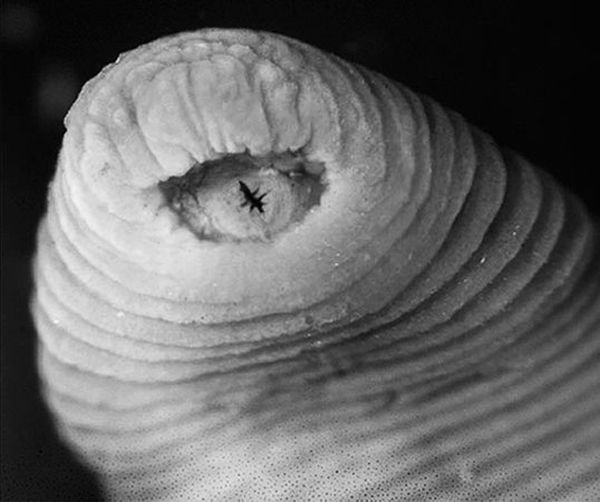T-rex leech discovered in a person’s nose just one of the top ten new species of 2010 (photos)

The International Institute for Species Exploration at Arizona State University has selected its top ten new species from 2010. While all the species are extraordinary, one was discovered in a most baffling, manner: taken from the nasal mucous membrane of a person in a Peruvian clinic. This 2-inch leech is named Tyrannobdella rex, which means ‘tyrant leech king’, because of a resemblance to the extinct T-Rex: both share a massive jaw and gigantic teeth. Imagine having that up your nose! The image above shows the Tyrannobdella rex’s anterior sucker exhibiting velar mouth and longitudinal slit through which the dorsal jaw protrudes when feeding. Scale bar is 1 mm. .
The T-rex nose-embedding leech is not the only species though. There’s also the Mozart glowing mushroom, the fruit-eating giant lizard, the spider that weaves the strongest silk, the antediluvian cockroach, among other biological marvels!
To read more and see photos:
Photos: the top ten new species discovered in 2010

(05/23/2011) If we had to characterize our understanding of life on Earth as either ignorant or knowledgeable, the former would be most correct. In 250 years of rigorous taxonomic work researchers have cataloged nearly two million species, however scientists estimate the total number of species on Earth is at least five million and perhaps up to a hundred million. This means every year thousands of new species are discovered by researchers, and from these thousands, the International Institute for Species Exploration at Arizona State University selects ten especially notable new species.
